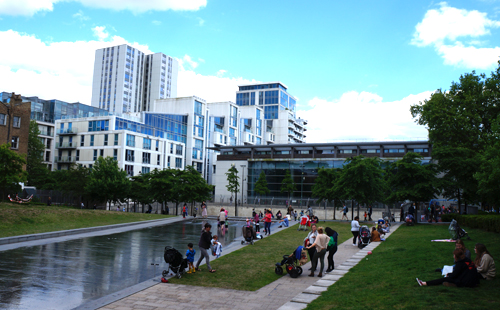Written by:
We were thrilled to be invited to Manchester to speak at the UK Urban Ageing Network as part of their day-long seminar about the built environment’s impact and potential on older people.
The network is part of WHO’s global Age-Friendly Cities network, which supports over 135 cities worldwide to explore and embed policy and practice to enable cities to develop in an age-friendly way.
My main task on the day was to share our approach to collaborative placemaking, with a view to community-led design processes and how communities in all their forms can be more connected and empowered in placemaking projects.
Despite the day being about age-friendly cities, our approach is to consider a community as a holistic entity, encompassing the needs of all ages and abilities. This of course means that older people need to be represented in the placemaking process and there is certainly value in engaging specifically with older people – but it needs to be part of a joint understanding of the whole community.
Very much in line with the thinking of The Glass-House, conversations gravitated towards the need for a culture change in organisations that shape place. Within local authorities delivering change and policy this means a shift towards a more accountable and supportive nature of work. Great examples were given of councils supporting and nurturing community initiatives, with the aims of enabling communities to run and manage the services themselves – or with a little helping hand from the council now and then. It also means that councils need to ‘let go a little’ of control over a process. This issue led to long discussions in our session about who takes leadership to make this happen, what the aims are and how to define the parameters of the project to ensure expectations are not unduly raised.
The issues of access and inclusion in local areas was key and paramount – and in particular I was struck by participants’ deep understanding of the wide-ranging effects of small, physical obstacles that prohibit older people from living a fuller and richer life. A very evocative case study was the Kilburn Older Voices Exchange project documenting with short films the realities of older people using their local high street. In a sensitive and respectful film made by older people with simple video recording devices such as mobile phones, the challenges of wobbly paving stones and poor eyesight were made very tangible and relevant to how we all use, design and upkeep our local areas.
The frustration of attendees, mainly council officers, around how little is done to future-proof our cities for an ageing population was striking. It is clear that the work done now will impact on both older people now and on our own lives. This was summed up neatly by one participant stressing the importance of good collective work to support needs now and as we age: “You don’t want to design yourself out of the future!”

